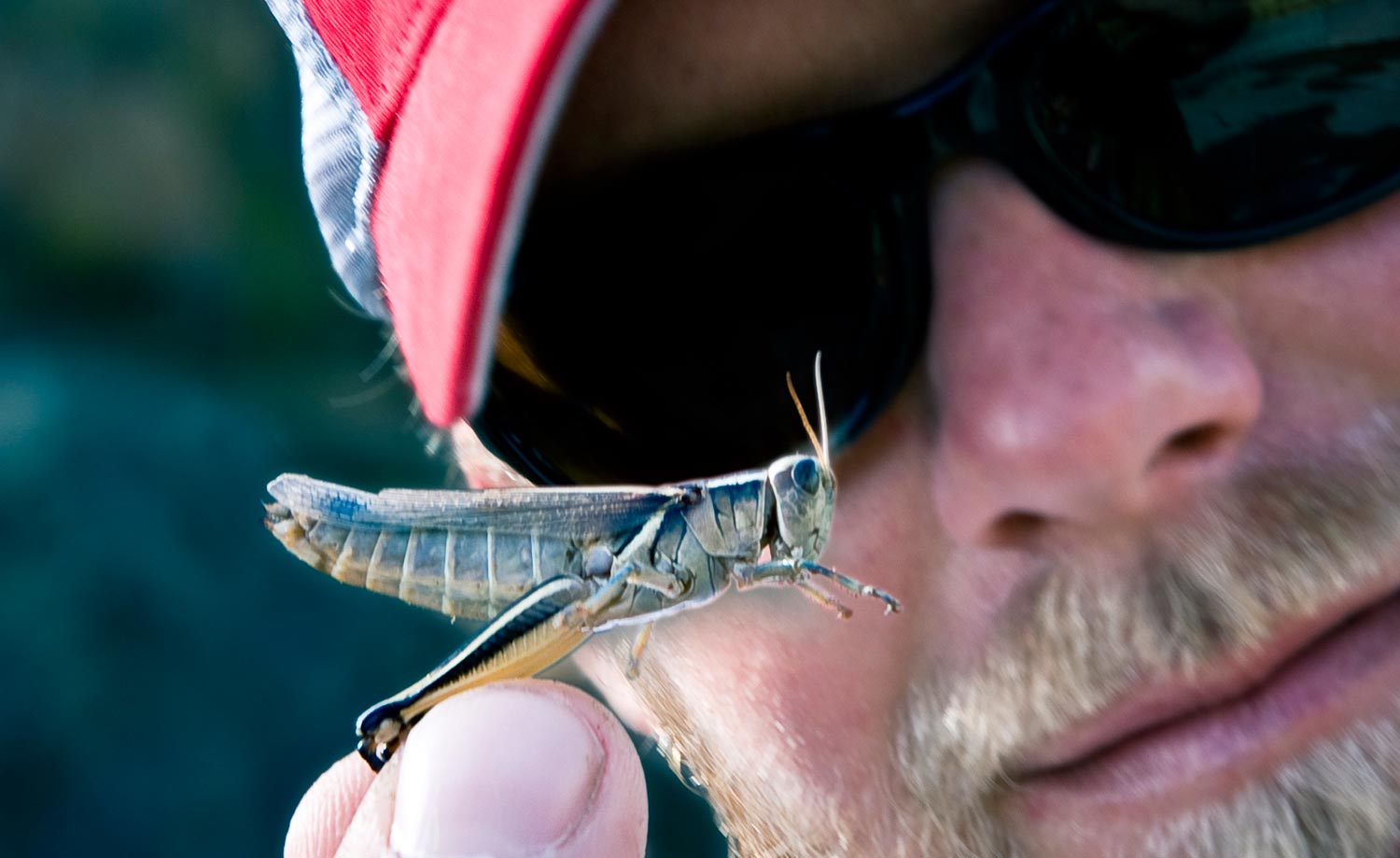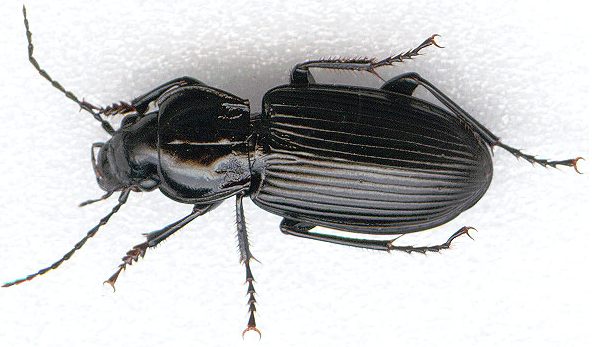By Kent Klewein
Every year, I’m asked by clients, when is the best time for them to come up and experience the terrestrial bite?
For years, I kept a terrestrial fishing journal to help me better serve my clients. The journal documented the arrival times of specific terrestrials and when I first started catching fish on them. It seemed to help me for a couple seasons, but after that, I started to become too reliant on the data in the journal, and I lost sight of the most important variable of all in timing the terrestrial season–weather. Depending on what the weather is doing for the current year, it can speed up or postpone the arrival of the terrestrial season. Some years it will only sway the start of the terrestrial season a week in either direction, while other years, it can sway the arrival well over a month. Understanding the role weather plays in the lives of terrestrials can help anglers nail down more accurately when the terrestrial season will begin and peak in their area. If you can be one of the lucky few to time and start fishing terrestrials before everyone else does, you can be rewarded with some of the biggest fish of the year.
The Effect Weather has on Terrestrials
Having consistent warm weather is a major factor in the arrival of terrestrials. Cold nights during late spring will keep terrestrials hiding in their burrows and out of sight during most of the day. During years when these cold snaps linger on, it will delay the arrival of the terrestrial season significantly. Sun is a major player in getting the terrestrial fishing going as well. I’m not 100% sure of this, but I think once the rainfall drops off in the summer, and the hot sun sucks out most of the moisture content found in the plants that the bugs are eating, the terrestrials are eventually forced to search out food sources that have a higher moisture content. It makes since to me at least, that the best places for the bugs to find moisture rich plants during the heat of the summer would be around water. All living things, including terrestrials, need water to survive. Furthermore, sun is the fuel for plants to grow, and many of our streams and rivers have large amounts of flowers that bloom (late spring, early summer) along the banks that provide food (nectar) for terrestrials. During above average rainfall years, where you’ve got more cloudy days than sunny days, it can inhibit or postpone the growth and blooming of these flowers that attract the terrestrials, and therefore, they won’t be attracted to the water and available to the trout. So when you’ve got a really wet spring and summer you can expect the terrestrial season to be late. It’s important to note also, that years with high rainfall, will significantly increase the water levels on our trout waters and postpone the terrestrial bite. Too much rainfall will keep the bugs from showing up, and raise water levels, which will discourage trout from expending the energy to rise to the surface to eat them, particularly if there’s sufficient food below the surface for the trout to eat. High water also flushes out terrestrials much quicker than during average water flows. You won’t find terrestrials swirling around in eddies for long periods of time.
Where to Fish Your Terrestrial Patterns First
The point of me writing this post was to help anglers catch trout on terrestrials as soon as possible. It’s by far, my favorite way and time of year to catch trout. There’s nothing like the excitement that’s created by a big trout crushing a terrestrial pattern on the surface. Below are some tips on how and where I first fish terrestrials during the year to maximize my success.
1. Search out flat or slow moving water first.
The last place you’re going to get a trout to come up and eat your terrestrial pattern is in fast moving water or riffles. You’ll have much more success in persuading trout to rise to the surface if you focus on fishing slow moving pools, long runs and tail outs. When the terrestrial season gets into full swing, you can then start fishing fast water too. Stick to ants, beetles and inchworms early one. For some reason, the grasshoppers don’t find their way in front of trout enough until it gets farther into the summer (late June on).
2. Focus on being on the water when it’s Sunny.
Although this doesn’t matter later in the terrestrial season, it does at the beginning of the terrestrial season. If you can plan on being on the water after two or three days of sunny weather, the terrestrials should be very active, and the fish will be looking for them.
3. Go subsurface if that’s what it takes to catch fish.
Every year, I go subsurface for the first part of the terrestrial season. It works great if you’ve got high flows or if you aren’t successful tempting trout to the surface. I regularly use a nymph rig with an inchworm lead fly and a small black ant or beetle dropper. It’s been my go to rig so far this year with all the rain we’ve had.
4. Experiment with different size terrestrials.
Some professionals say you should always start out fishing small terrestrials and then increase the size of your patterns as the summer progresses. That can be very true, but you shouldn’t abide by it 100% of the time. For example, I’ve caught far more trout fishing a size 8-10 beetle pattern than I have on smaller beetle patterns. Sometimes the bigger profile, and added food value it provides, will persuade a trout to eat when a small pattern won’t. That being said, anglers should also think about downsizing their terrestrials if they think the fish are growing wise from fishing pressure. I alway start off big first, but if I’m getting refusals, I’ll always downsize my pattern. You don’t need a ton of different terrestrial patterns. Having different sizes is more important. Fishing terrestrial patterns is no different then fishing any other trout flies. If you aren’t having luck, you probably need to change your pattern.
5. Get on the water early after the terrestrial season is in full swing.
It’s true that anglers can have success catching trout on terrestrials all hours of the day. However, once you get into the heat of the summer, I’ve found some of the best fishing is during dawn and dusk when light is low. Trout become more active when water temperatures are cooler and they also feel safer foraging when most anglers are off of the stream. Take advantage of this fact during the middle and later part of the terrestrial season and you should find more success and the occasional trophy. This holds very true for increasing your odds at catching brown trout.
6. Pay attention to the terrestrials you’re seeing on the water.
It’s kind of funny, but I find that a lot of anglers fishing during the terrestrial season look into their fly box in the morning, and say, “hmmm, what do I feel like fishing today?” Trout do tend to key in and feed on the most available food supply, and anglers should pay attention to that fact. If you’re on the water and ants are constantly falling off the overhanging trees on your back, you probably should consider fishing ants. If you’re walking up the stream and regularly seeing inchworms hanging off the trees on silk ropes, chances are, an inchworm pattern will be a good fly for you that day. The other day I saw a few giant two-inch long ground beetles floating down the river. I tied on one of my big foam beetles and my client caught his biggest fish of the day on it. Use the power of observation when you’re fly fishing and select your flies accordingly.
Keep it Reel,
Kent Klewein Gink & Gasoline www.ginkandgasoline.com hookups@ginkandgasoline.com Sign Up For Our Weekly Newsletter!


One of our employees was cleaning out the cricket cage yesterday and had about 1,000 in a small plastic container. When I looked into the container there were hundreds of glowing heads, it looked like a bin full of beadhead nymphs. I’m not sure what that means other than I haven’t cleaned a cricket cage in a while, I’m thinking adding a little flash to the front of my cricket/hopper patterns might be in order.
Pingback: First Casts 08.29.14 | Orvis News